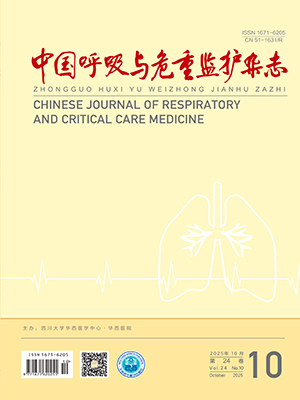Objective To analyze the differences in microbial communities in bronchoalveolar lavage fluid (BALF) from patients with simple pneumonia versus those with chronic obstructive pulmonary disease (COPD) combined with lower respiratory tract infection using metagenomic next-generation sequencing (mNGS). Methods Patients hospitalized for pulmonary infections at the First Affiliated Hospital of Xinjiang Medical University between December 2021 and March 2023 were included. Based on the presence of COPD, the patients were divided into two groups: those with simple pneumonia and those with COPD combined with lower respiratory tract infection. mNGS was employed to detect microbes in BALF, and the microbial community distribution characteristics of the two groups were analyzed. Results A total of 97 patients were included, of whom 80 (81.82%) had positive microbial detection results. The smoking index in COPD group with lower respiratory tract infection was significantly higher than that in the group with simple pneumonia (t= −3.62, P=0.001). Differences in microbial community distributions were observed between the groups. At the genus level, 19 species of microorganisms were detected in the simple pneumoniapulmonary infection group, including 8 bacteria (42.11%), 2 fungi (10.53%), 3 viruses (15.79%), and 6 other types of microorganisms (31.58%). In contrast, 22 types of microbes were detected in COPD group with lower respiratory tract infection, including 10 bacteria (47.62%), 3 fungi (14.29%), 4 viruses (19.05%), and 4 other types of microorganisms (19.05%). Differences were also noted in reads per million (RPM) values; bacterial RPM values at the genus level were significantly higher in the COPD group during non-severe pneumonia compared to the simple pneumonia group (Z=–2.706, P=0.007). In the patients with severe pneumonia, RPM values at the genus and species levels were significantly higher than those in non-severe pneumonia (Z=−2.202, P=0.028; Z=−2.141, P=0.032). In COPD combined with severe pneumonia, bacterial RPM values were significantly higher at the species level compared to non-severe pneumonia (Z=−2.367, P=0.017). Conclusions There are differences in the distribution of microbial communities at the genus and species levels in BALF from patients with COPD combined with lower respiratory tract infection compared to those with simple pulmonary pneumonia. Bacteria are the predominant microbial type in both groups, but the dominant bacterial species differ between them. Simple pneumonia are primarily associated with bacterial, viral, and other types of microbial infections, while COPD combined with lower respiratory tract infection is predominantly associated with fungal and bacterial infections. RPM values may serve as an indicator of the severity of pneumonia.
Citation:
XIA Yu, KAWSAR BAHETJAN. Metagenomic next-generation sequencing analysis of microbial community distribution and load in BALF of chronic obstruction pulmonary disease patients with lower respiratory tract infections. Chinese Journal of Respiratory and Critical Care Medicine, 2024, 23(6): 414-422. doi: 10.7507/1671-6205.202312059
Copy
Copyright © the editorial department of Chinese Journal of Respiratory and Critical Care Medicine of West China Medical Publisher. All rights reserved
| 1. |
|
| 2. |
|
| 3. |
|
| 4. |
|
| 5. |
|
| 6. |
|
| 7. |
|
| 8. |
|
| 9. |
|
| 10. |
|
| 11. |
|
| 12. |
|
| 13. |
|
| 14. |
|
| 15. |
|
| 16. |
|
| 17. |
|
| 18. |
|
| 19. |
|
| 20. |
|
| 21. |
|
| 22. |
|
| 23. |
|
| 24. |
|
| 25. |
|
- 1.
- 2.
- 3.
- 4.
- 5.
- 6.
- 7.
- 8.
- 9.
- 10.
- 11.
- 12.
- 13.
- 14.
- 15.
- 16.
- 17.
- 18.
- 19.
- 20.
- 21.
- 22.
- 23.
- 24.
- 25.




